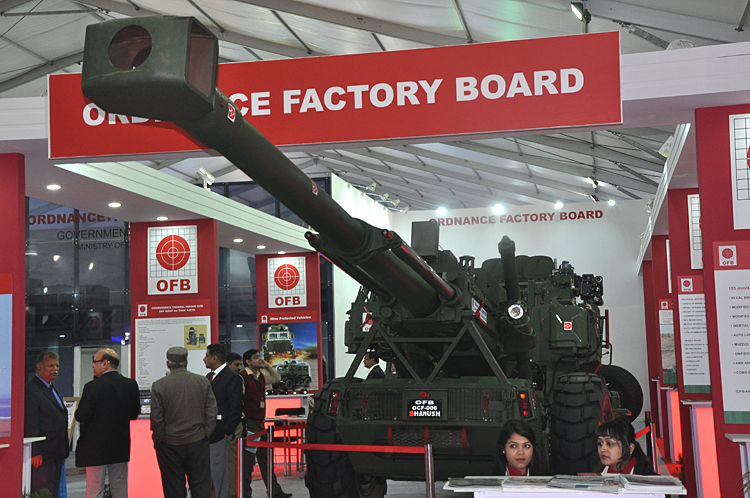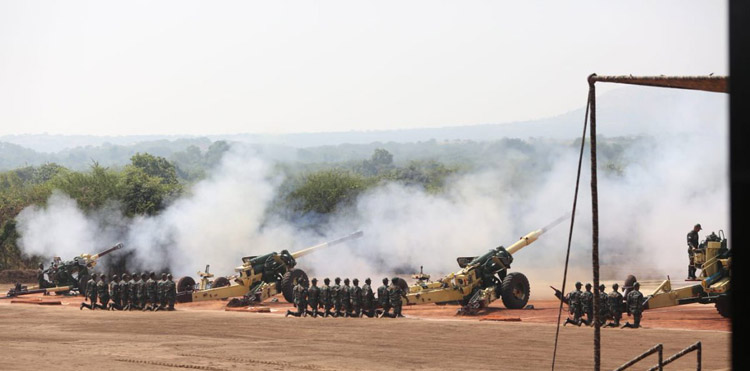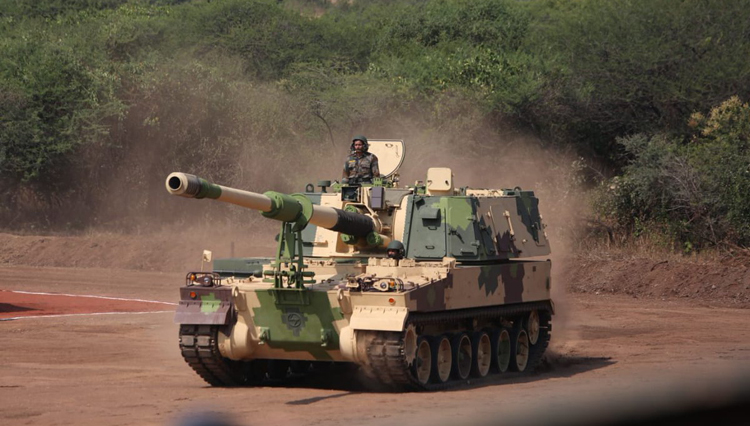INDIAN ARMED FORCES CHIEFS ON OUR RELENTLESS AND FOCUSED PUBLISHING EFFORTS

The insightful articles, inspiring narrations and analytical perspectives presented by the Editorial Team, establish an alluring connect with the reader. My compliments and best wishes to SP Guide Publications.

"Over the past 60 years, the growth of SP Guide Publications has mirrored the rising stature of Indian Navy. Its well-researched and informative magazines on Defence and Aerospace sector have served to shape an educated opinion of our military personnel, policy makers and the public alike. I wish SP's Publication team continued success, fair winds and following seas in all future endeavour!"

Since, its inception in 1964, SP Guide Publications has consistently demonstrated commitment to high-quality journalism in the aerospace and defence sectors, earning a well-deserved reputation as Asia's largest media house in this domain. I wish SP Guide Publications continued success in its pursuit of excellence.
- MoD initiates comprehensive review of Defence Acquisition Procedure 2020, pushes for defence reforms
- G7: The Swansong
- Kalinga Connect: South Asia to Polynesia
- Must Credit DRDO for Operation Sindoor, now what is next for defence R&D?
- The layered Air Defence systems that worked superbly, the key element of Operation Sindoor
- Operation Sindoor | Day 2 DGMOs Briefing
- Operation Sindoor: Resolute yet Restrained
Indigenous Truck Mounted Gun System (MGS)
 |
The Author is Former Director General of Information Systems and A Special Forces Veteran, Indian Army |

The Indian Army needs some 4,500 howitzer guns for defending the country against China and Pakistan. First attempts of indigenisation by the Ordnance Factory Board (OFB) began in 2004 for upgrading the barrel of the original Bofors gun from 155x39mm caliber to 155x45mm but the attempt could not materialise at that time. The Army’s howitzer kitty revolves around the 155x39mm Bofors howitzer guns, the 155x45mm Dhanush howitzer, K-9 Vajra self-propelled howitzer and the M777 Ultra Light Howitzer under import from the US. In 2018, firing trials for the first indigenously developed long range ‘Dhanush’ howitzers were successfully completed, firing at Leh and Pokhran. On April 8, 2019, the Army took delivery of the first six of 114 indigenously designed and developed Dhanush 155/45mm at the Gun Carriage Factory in Jabalpur, eight years after the project was taken up by the Ordnance Factory Board (OFB). No new artillery had been procured since the bribery scandal that followed the March 1986 deal for 41 FH-77B Bofors howitzers.
Dhanush howitzer is an upgraded variant of the FH-77B 155/39 mm Swedish defence contractor Bofors (now BAE Systems) 414 of which were imported by India between 1987 and 1991. In comparison to the FH-77B, the Dhanush’s barrel is 877 millimeters longer. Dhanush howitzer is a reverse-engineered upgraded variant of the original Bofors design weighing less than 13 tonnes. As per available data, the 45-caliber Dhanush howitzer reportedly has a maximum effective range of 38 kilometers in salvo mode compared to the 39-caliber, 27-kilometer range of the FH-77B howitzer guns. Dhanush howitzer is capable of firing eight rounds per minutes and needs a crew of six to eight personnel. The first lot of 36 Dhanush howitzers were expected to be manufactured by December 2019, 48 more are to be produced in 2020 and another 48 howitzers to be delivered to the Army by the end of 2022. The per-unit price is a little over $2 million. Dhanush is equipped with inertial navigation-based sighting system, auto-laying facility, on-board ballistic computation and an advanced day and night direct firing system. The self-propulsion unit allows the gun to negotiate and deploy itself in mountainous terrains with ease. The howitzer has been mechanically upgraded to fire standard NATO 155mm ammunition and can accommodate both boll bags and the bi-modular charge system (BMCS) which have resulted in increasing the range. ‘Dhanush’ has also been electronically upgraded to enhance the firing accuracies, laying speeds of the existing gun and to provide compatibility with various kinds of ammo as well. According to the media quoting officials of the Ministry of Defence (MoD) 81 per cent components of the Dhanush are indigenous, which is likely to rise to 90 per cent in subsequent production tranches.

Recent news reports of August 20, 2020 have revealed that trials for the truck mounted indigenous howitzer, dubbed Mounted Gun System (MGS) are to begin shortly. According to OFB officials, internal firing trials at the Proof Establishment in Balasore would validate not just the gun but also its integration with the 8x8 Tatra vehicle on which it is mounted. Unlike towed artillery which has to be hauled into the battlefield by multi-wheeled trucks, MGS are guns mounted on a high-mobility truck. These guns can be brought into battle much faster, carry 18 artillery shells on board and are useful to support mobile infantry in the plains and deserts. The MGS has a range of over 40 km and will be offered to the Army for user trails after several rounds of internal trials. The gun has a modular design with shoot and scoot capability and can fire in all weather conditions and by day and night. It has a GPS aided Inertial Navigation System and a day and night firing capability. It carries a backup emergency power pack and its all-wheel drive ensures maximum traction in cross-country operations. The specially modified truck has hydraulically operated rear stabilisers to steady the vehicle while firing. The cabin has been reinforced to withstand the shock waves during operations. Designed by GCF Jabalpur, the MGS builds on the OFB's successful Dhanush 155x45mm howitzer.

The test of a new MGS is the fifth type in a series of Army howitzer requirement projected nearly two decades ago. It comes at a time when the Army has begun receiving its first guns in over 30 years. This year the Army will start inducting M777 Ultra Light Howitzers and K-9 Vajra self-propelled howitzers and has received a first batch of six Dhanush howitzers last year as mentioned above. Quantity 200 MGS are to be bought off the shelf and the remainder to be built within the country through technology transfers to an Indian partner with all deliveries to be completed by the end of the 13th five-year defence plan ending in 2022. OFB officials say they have also received preliminary inquiries from prospective buyers in the Middle East. The MGS is part of the purchase of over 2,800 howitzers under the Field Artillery Rationalisation Plan (FARP) launched after the Kargil Conflict in 1999. Two of the Army's biggest procurements in the past four years were for howitzers - 145 M777 Ultra-Light Howitzers for $737 million from the US in November 2016 and an April 2017 deal worth Rs 4,600 crore for 100 K-9 'Vajra' tracked howitzers from South Korea's Hanwa-Tecwin. FARP envisages standardising the artillery regiments into four types of howitzers - towed by trucks, mounted on a tank chassis, on a wheeled vehicle and ultra-light guns that can be airlifted into battle by helicopters.





